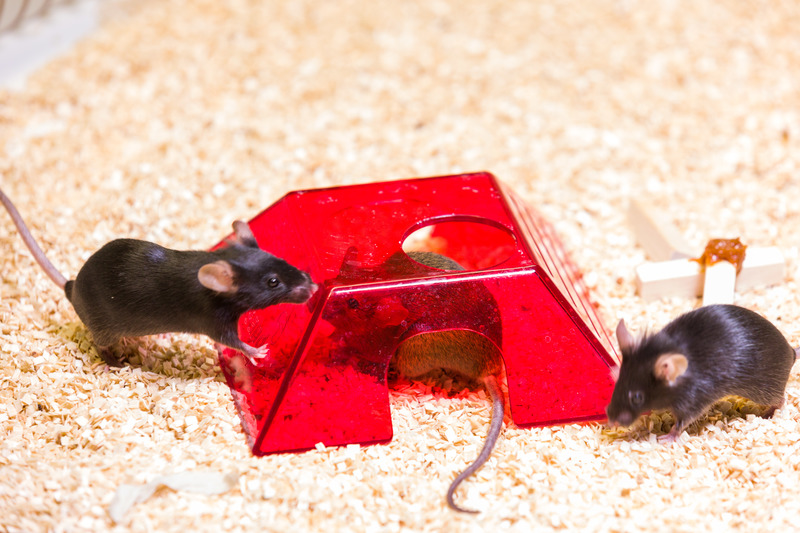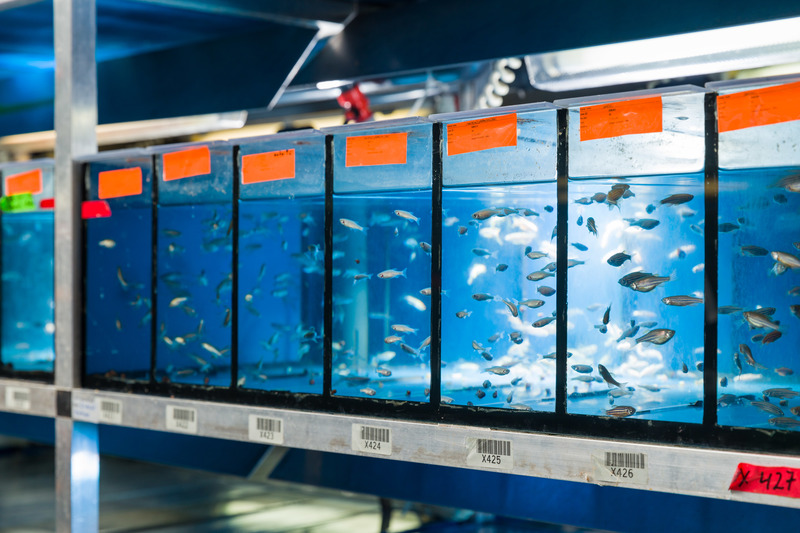Animal Facility
At the Max Planck Institute for Biological Cybernetics, research is currently being conducted on zebrafish, mice and rats. As of 2017, animal experiments on primates are not longer conducted at the Max Planck Institute for Biological Cybernetics.
A team of experienced veterinarians and animal keepers provides expert medical care and housing in our animal facilities. The Max Planck Society as well as the scientists, veterinarians and animal keepers take their responsibility for the performance of animal experiments as well as the appropriate housing of the laboratory animals very seriously. This is not only because it is impossible to obtain meaningful scientific findings without healthy and unstressed animals.
Rats and mice

The mice and rats in our research facilities are normally kept in groups, which corresponds to their natural social lifestyle. They live in single-ventilated IVC cages equipped with bedding, nest-building materials, and a tube or house, because rodents naturally love to hide. Lighting simulates the change from day to night. Mice are skilled climbers and not only use the cage floor, but can also hang upside down on the bars of the cage cover. Both rats and mice like to cuddle up with their conspecifics.
Zebrafish

Zebrafish grow up in petri dishes during their first days of life. During this time, the fish larvae are not yet fed, but feed on the yolk sac with which they were born. After about seven days, they are transferred to larger aquaria. Over time, the water flow is increased more and more, as the tiny larvae are not yet able to fight a strong water flow. At the age of three to four months, they then move from the baby room to the holding room for the adult fish. Zebrafish live in a loose association of fish and should therefore be kept in schools. In the 3.5 to 12 liter aquariums, the up to 5-6 cm large fish have about 200 ml of water per individual available. In the wild, the animals usually live about one year, in captivity two years or older.
